M
Leave a Legacy of Giving
You can support our mission of changing lives by saving sight in multiple ways!
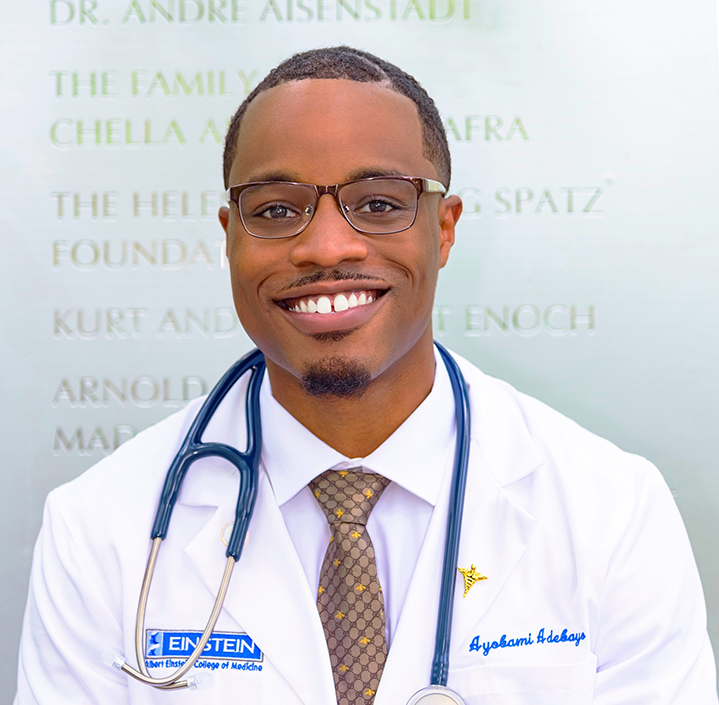
Dr. Ayobami Adebayo
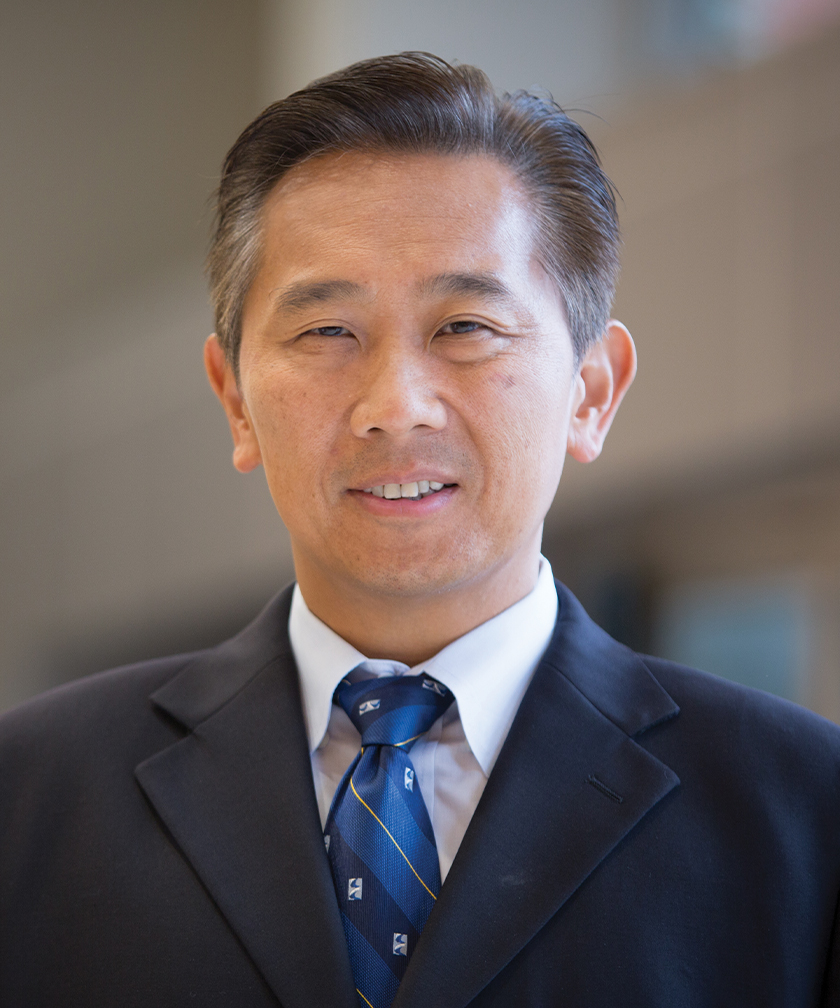
Dr. Roy Chuck
In recent years, advancements in medical research have pushed the boundaries of what was once considered feasible in the field of ophthalmology. One such study observed the effect of the expansion of eye bank donor age on corneal endothelial cell density and surgeon acceptance rate of those tissues. Donor characteristics, endothelial cell density, and acceptance of tissues for use in surgery were compared between age groups in five-year intervals. The aim was clear: to assess how this expansion would influence the availability of corneal tissue for transplantation and challenge existing biases against older donors. Saving Sight was proud to partner with Dr. Roy Chuck and Ayobami Adebayo, among other researchers, to provide the corneal tissue used during this study.
This single-site study featured 25,969 corneas from eye bank donors from 2018 – 2022 between the ages of 2 and 75. At the beginning of 2022, the donor age limit was increased to 80 years old, thus allowing donated tissue from older donors to be used in transplants. The age limit increase allowed 411 more cornea donations, which led to 208 more transplants. The average endothelial cell density for the 71-75 age group was 2,349 cells/mm2, compared to 2227 cells/mm2 in donors aged 76-80. The difference of 122 cells/mm2 doesn’t seem like much, but the study saw that donors aged 71-75 had a 38% surgeon rejection rate, while those aged 76-80 had a 48% surgeon rejection rate.
There could be multiple reasons for the difference in surgeon rejection rate, but one could be age bias. Traditionally, corneas that come from older donors are looked at as not viable, but this study showed that corneas from older donors are still very viable for transplant. While there isn’t a shortage of corneas for transplant in the United States, there is a global shortage, resulting in patients in other countries waiting on the transplant list for months.
“If we can expand the age pool to increase and even get some more donations, that will increase transplants,” Adebayo said. “And I think there’s just a lot more room for growth in that area.”
This study is important for the future of ophthalmology and eye banks because there is a cornea shortage in other countries. By increasing the donor age limit, more corneas will be available for transplant globally. Expanding the donor age limit and using those tissues in surgery can give the gift of sight to many more people in need across the globe. Potential age bias isn’t the only factor in the difference in surgeon rejection rate, but it does show that more work needs to be done.
“So, no matter what you do, there’s still a bias against age and many things that we do in life, and that bias never disappears,” Chuck said. “…We can do one of two things. We can work to death to change everyone’s mind just by talking to them. It’s very difficult to do, and it’s much easier for us to generate data, and that’s what we’re doing. That’s the whole basis of research, you know, change thought by proving it with data.”
As researchers navigate the complexities of eye, organ, and tissue donation and transplantation, they remain committed to ensuring equitable access to sight-restoring treatments for all. Increasing the donor age limit will increase viable donor tissue for transplant, allowing those in underserved areas to receive the gift of sight. The journey to redefine how corneal donations are handled isn’t solely about science; it’s a moral duty with the chance to change lives by saving sight.
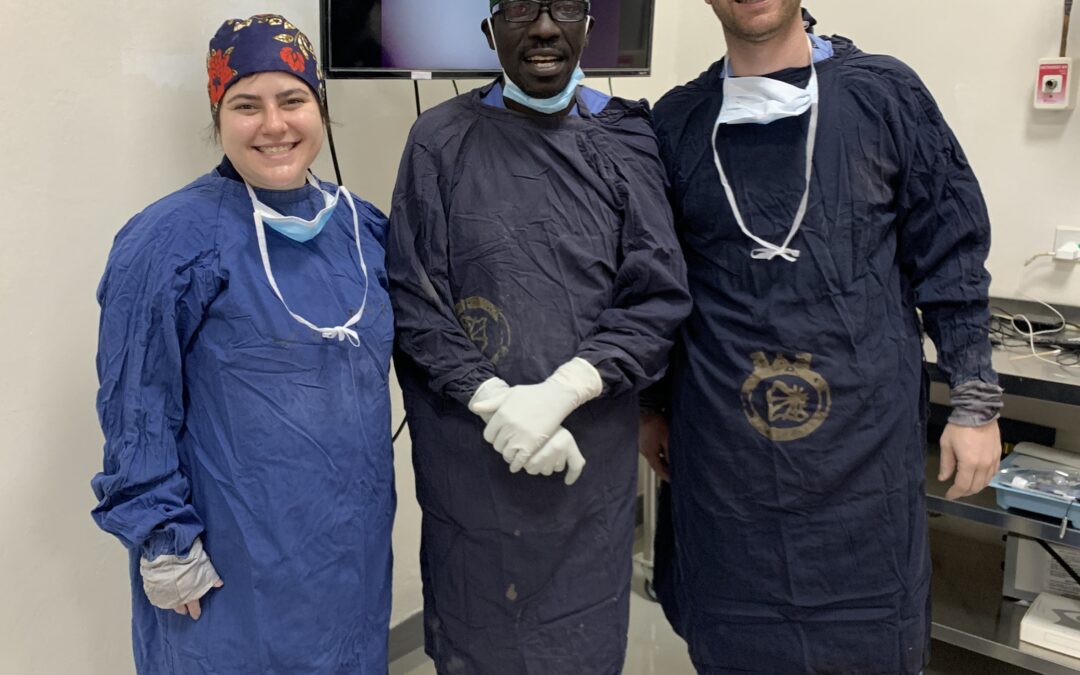
At Saving Sight, our vision is to be the global partnership model for how eye banking and charitable vision services can most effectively serve people and communities. This standard we hold ourselves to has guided us to over 60 years of excellence in eye banking. We wouldn’t be able to change lives by Saving Sight without the support and dedication of our corneal surgeon partners. One corneal surgeon partner has a history of Saving Sight in the United States and globally.
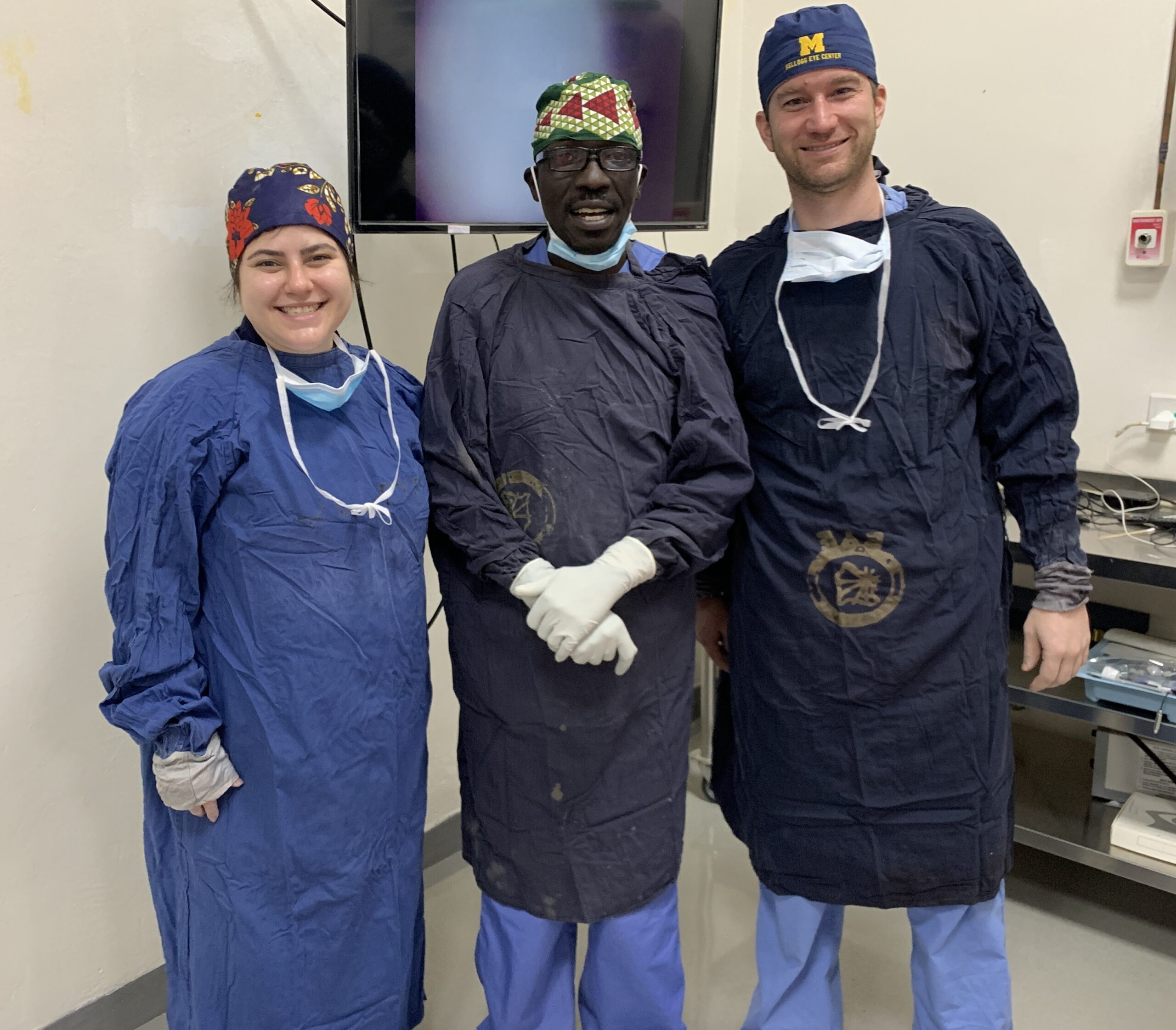
Sara Krachmalnick, Senior Ophthalmology Resident at KU, Dr. Ben Roberts, Ophthalmology Specialist at Tenwek Hospital in Kenya, and Dr. Miles Greenwald, Ophthalmology Specialist
Dr. Miles Greenwald started at the University of Kansas Medical Center in September 2023, focusing on corneal surgeries and comprehensive eye care. Before KU, Dr. Greenwald completed a one-year cornea fellowship before participating in a Global Ophthalmology Fellowship at the University of Michigan. The Global Ophthalmology Fellowships aims to build skills and relationships with different hospitals and clinics in the developing world. Often, there are fewer professionals, nurses, and technicians, and their resources are a lot less.
Dr. Greenwald spent seven months of that year traveling to different countries, working with the local ophthalmologists to determine how best to provide eye care. Dr. Greenwald spent time in India, Rwanda, Honduras, and two places in Kenya.
Just a few months ago, Greenwald traveled back to Kenya on a mission trip to save sight and teach and train the next generation of corneal surgeons. Coming out of the Global Ophthalmology Fellowship, he knew he wanted to work in an academic ophthalmology department, and that is what KU provided.
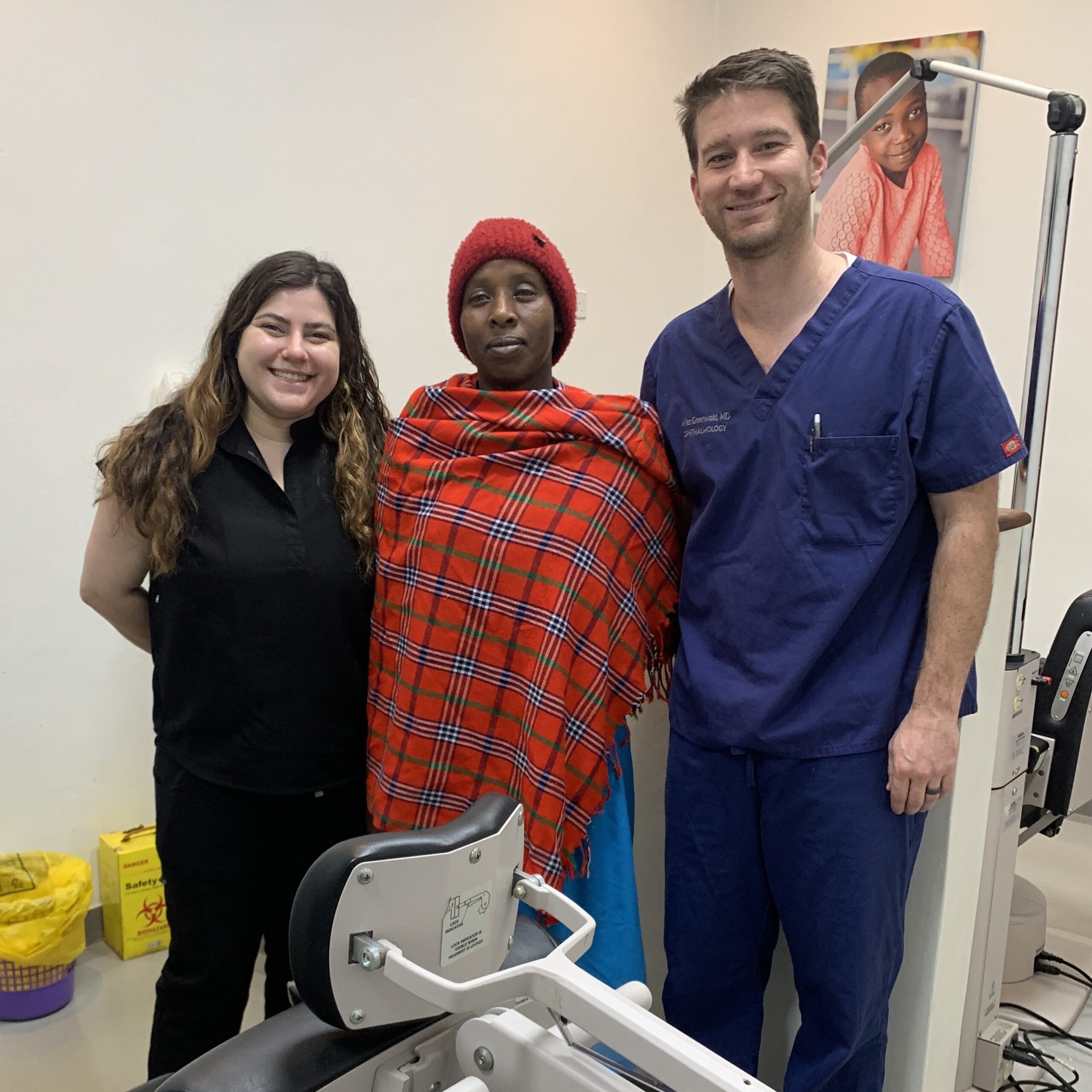
Sara Krachmalnick, Senior Ophthalmology Resident at KU, and Dr. Miles Greenwald, Ophthalmology Specialist
“I knew that I wanted to work with residents and medical students and be involved in training and teaching the next generation how to be good ophthalmologists and doctors. I’ve been very fortunate throughout my training to have learned from just amazing, amazing people and have mentors who have devoted so much to training me and helping me be the best that I can be. And so, I wanted to be involved in that as part of my career,” Greenwald said.
Before his trip, Greenwald connected with the ophthalmologist in Kenya and discussed what he could do and what the resident could do to be most helpful. The ophthalmologist said that people are on the waiting list for cornea transplants. After hearing this, Greenwald connected with Saving Sight to see how we could partner with him and save sight.
“Saving Sight was super supportive. They just said to tell us the details. How can we help logistically? How can we help get these patients taken care of? How many tissues would be helpful?” Greenwald said.
In a week, Greenwald and the team completed 12 corneal transplants with tissue provided by Saving Sight. Patients ranged in age from as young as 20 to patients in their 60s. “One of the crucial pieces for collaborations in corneal transplants is the lifelong care that is needed… I can trust Dr. Ben Roberts and his team at the eye hospital that when we do the surgery during that one time period, he and his team are there year-round and are able to care for the patients and do all the post-op care for the transplants,” Greenwald said.
Eye banking is something we take for granted here in the United States. Kenya only has one eye bank, which only processes a little tissue. It is difficult, if not impossible, for physicians in Kenya to get tissue from that eye bank.
“So, working with Saving Sight to have the tissues for the trip would be impossible without Saving Sights support. It makes it possible to restore vision for these patients and to try and give them their livelihood and their lives back,” Greenwald said.
Greenwald says the support he and other doctors within different specialties receive from leadership at KU has been invaluable in making his dream a reality.
“I’m excited for it to continue to build and become kind of a regular thing for the faculty and the residents to be involved in,” Greenwald said.
He plans a trip to Honduras, where he will work with a few ophthalmology surgical fellows, teaching them how to do some advanced surgeries, including corneal transplants and glaucoma surgery. The goal of his trip to Honduras is not for him to do another corneal transplant but to help the young surgeons learn how to do it for themselves.
Corneal blindness is a problem everywhere in the world. It’s estimated that about 4 million people worldwide are legally blind from corneal blindness.
“That number can be easily daunting, and I think we can get numb to it when there are statistics like that. Each of those people has a life dramatically affected by the lack of vision. Being able to partner with Saving Sight to do these surgeries and provide the appropriate follow-up care and post-operative management for each patient and to be able to help restore their sight and regain their life is rewarding.”
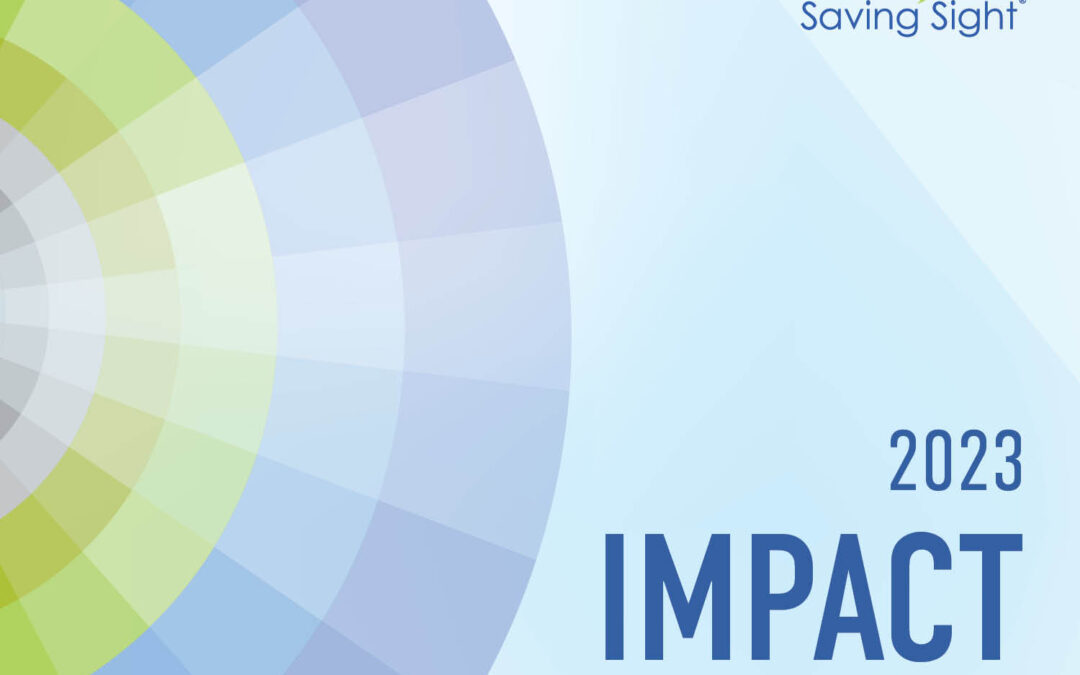
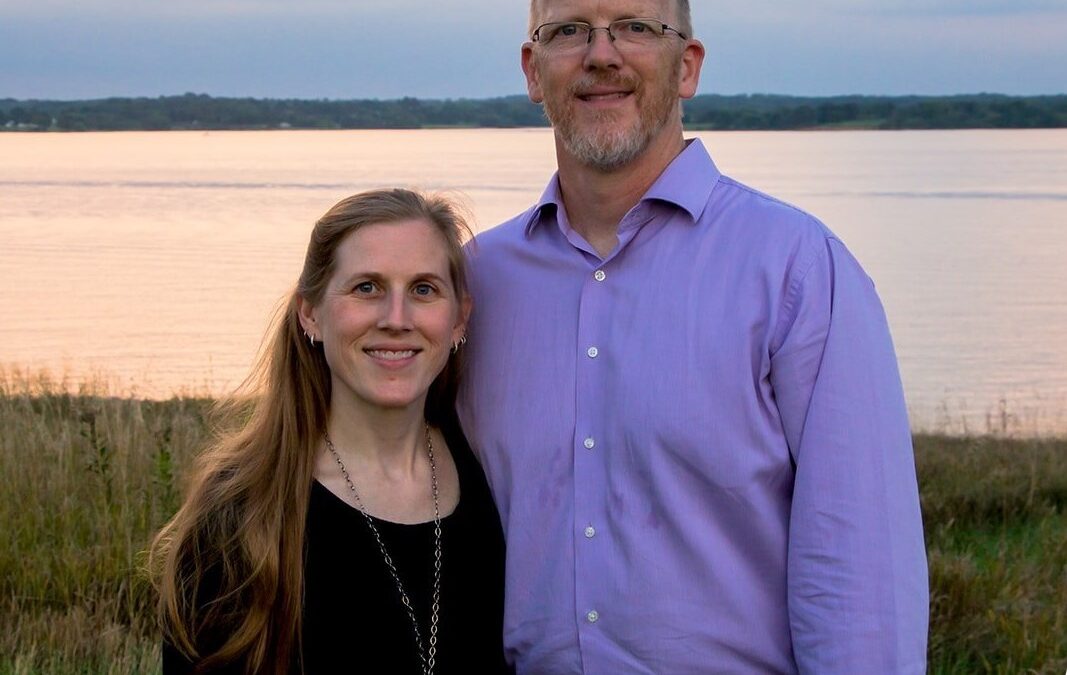
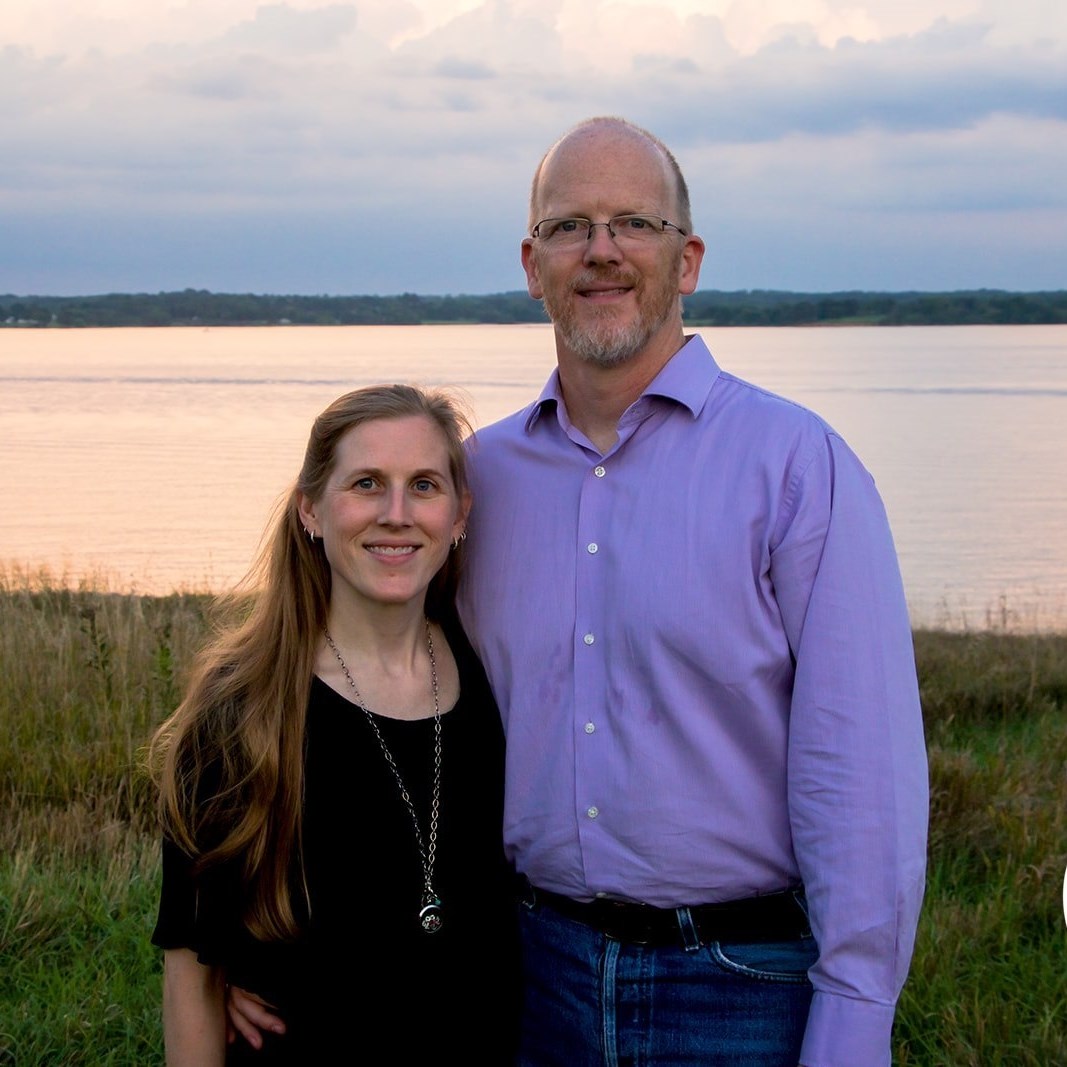
Scott pictured with his wife
Scott’s journey to restored vision began on a farm in central Kansas when he was 19. After unloading grain from storage bins, Scott noticed that his left eye had swollen shut. Scott eventually found his way to Dr. Bruce Grene in Wichita, Kansas where he was treated for bacterial infections, which offered some improvements. Shortly after that Scott was diagnosed with Acanthamoeba Keratitis, a rare infection of the eye. After the infection was treated Scott received his first cornea transplant. The surgery went smoothly, and Scott regained his vision, which remained stable for the next 20 years. Scott was on a tennis scholarship when he received his first cornea transplant, and he said, “The experience of going from playing sports to facing the uncertainty of vision loss had been nothing short of a rollercoaster ride.” Scott was able to see 20/20 uncorrected out of his left eye for nearly 20 years and for a few years after, his vision was corrected by glasses. Since the transplant, many of his optometrists have enjoyed the opportunity to work with his unique circumstances.
Life took an unexpected turn when Scott was involved in a car accident in January of 2023 that resulted in damage to the cornea, lens, and iris of his left eye. This accident led to an emergency cornea transplant performed by Dr. Farhat and his team in Kansas City. Scott praised the expertise of both Dr. Bruce Grene in Wichita and Dr. Farhat in Kansas City, highlighting the crucial roles they played in his journey to sight restoration, many years apart.
Scott’s story not only underscores the enduring human spirit but also the importance of organ, eye, and tissue donation. Scott emphasized the significance of having tissues readily available, contrasting the past when waiting was the norm and he expressed gratitude for the advances in medical science that allow him and countless others to see again.
“I have been the lucky one to have lost vision to both disease and trauma. I have also been fortunate enough to have had it restored via a transplant, and the prognosis is good that we will soon have it returned as I continue to heal from my second,” says Scott. Scott’s story highlights the impact of organ and tissue donation on saving lives and providing hope to individuals facing vision loss. As his journey continues, Scott remains an inspiring example of resilience.
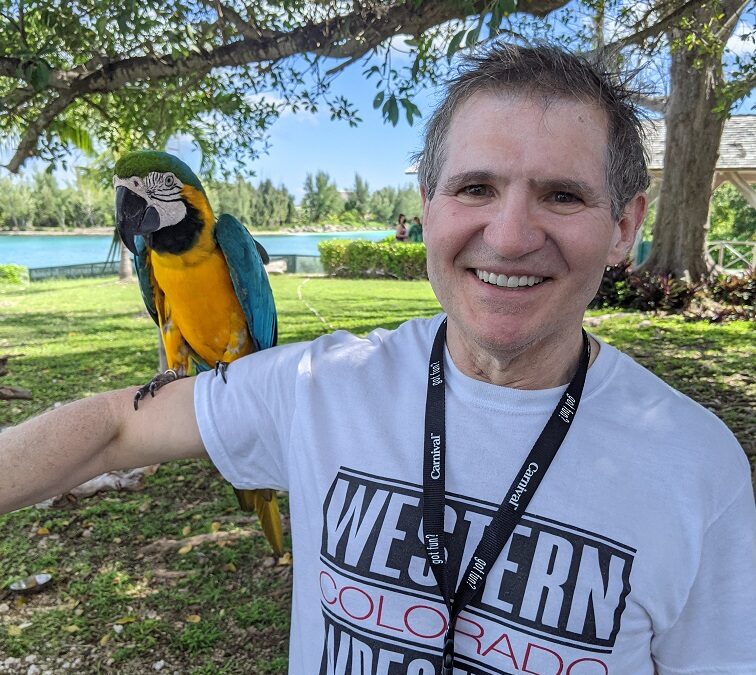
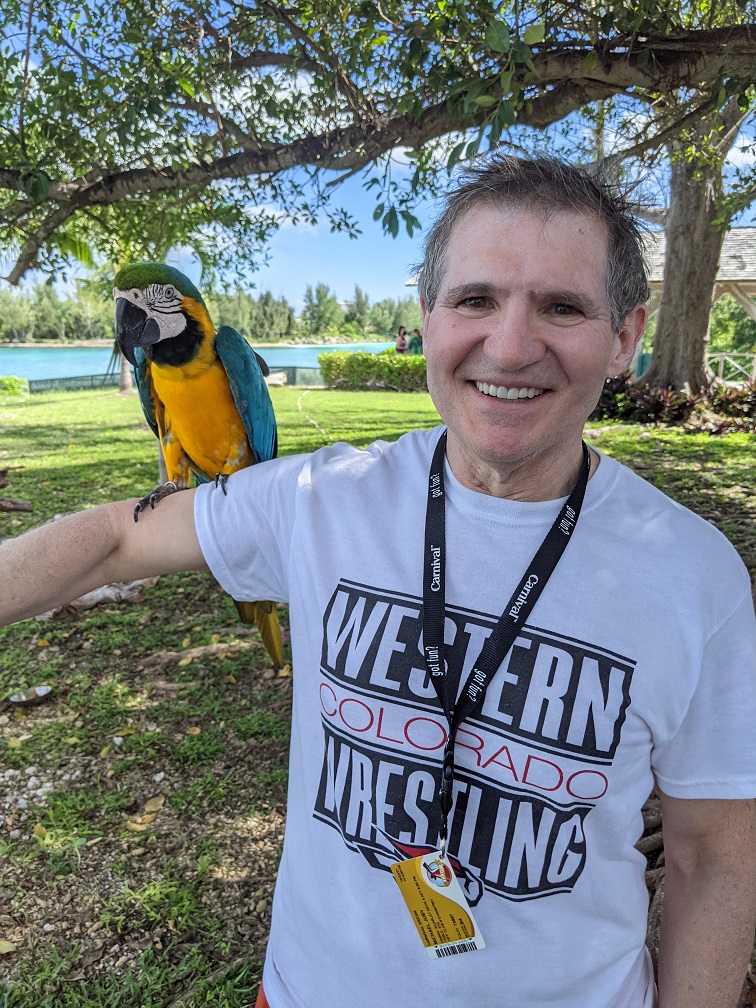 For months, Mike had been fighting an eye infection that just wouldn’t seem to go away. His eye doctor prescribed medicated drops, which seemed to help at first. However, the infection dug in deeper, and eventually, even administering the drops on an hourly basis wasn’t helping.
For months, Mike had been fighting an eye infection that just wouldn’t seem to go away. His eye doctor prescribed medicated drops, which seemed to help at first. However, the infection dug in deeper, and eventually, even administering the drops on an hourly basis wasn’t helping.
Mike spent much of 2022 battling the infection that began in April. After taking a trip to Europe in the fall, his vision became much worse. That’s when he received a consult to see Dr. Kenneth Goins at KU Eye Center. Almost immediately, Dr. Goins identified that Mike would need a corneal transplant to save his eyesight.
“I had no idea that I’d need a transplant-that was not even on my list. I was concerned because I hadn’t been able to see out of that eye for so long, and I knew the infection wasn’t responding to the treatment,” said Mike. “Frankly,I was thinking that there was a good chance that I was going to lose my sight, and it didn’t occur to me to think about a transplant.”
Immediately, Mike had questions about what it meant to be a corneal transplant recipient. Furthermore, it weighed on him knowing that his gift of sight would come from loss.
“I am fully aware that the cornea I received also means that someone lost their life, and a family and friends lost their loved one,” said Mike.“I’m deeply humbled by that and can’t really find anything adequate to say, so I will just leave it that they have my very very deepest gratitude for this gift. Without such profound generosity, I would certainly be losing my sight in that eye.”
On December 30, Mike underwent a corneal transplant procedure to save his sight. While he is still healing from the procedure and gradually regaining vision, his outlook is bright.As a CPA, an active member of his community, and a retired high school wrestling coach, Mike is looking forward to putting his new view to good use. He hopes to spend 2023 in partial retirement, enjoying more of his favorite activities, like scuba diving and traveling.
“It very much meant the world to me. I really had resigned to myself and was thinking about what it was going to be like to live with one eye,” said Mike.“I kept trying to comfort myself that, ‘you can still see with one eye; you can still make things work with one eye.’ But now, with this gift,I may not have to do that.”